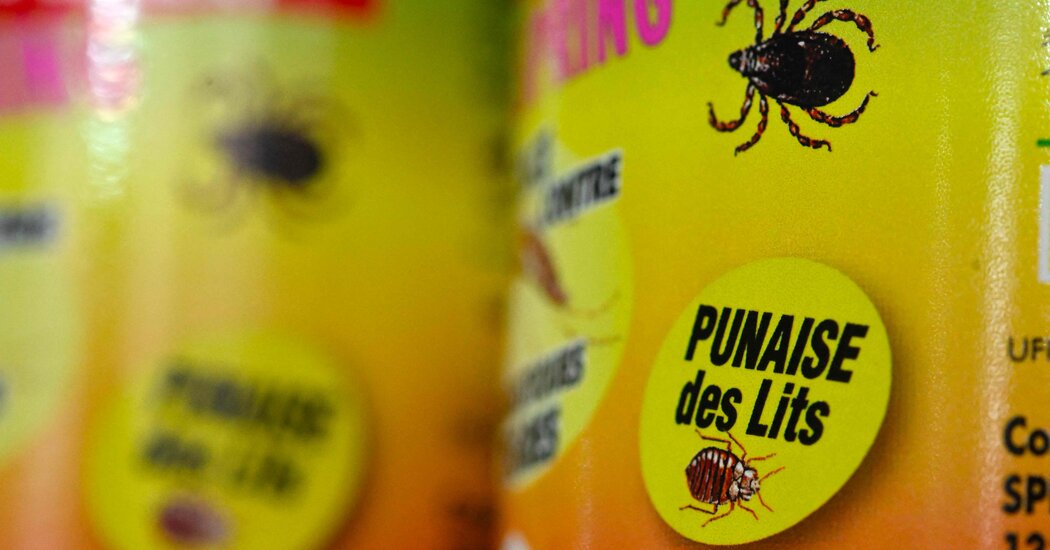The talk of Paris Fashion Week this year has been the little, brown bug — bedbugs. The pests have popped up in trains, airports and movie theaters, fanning fears that they may also be lurking in hotels, an echo of New York City’s mid-2000s bedbug panic. The cities and decades may be different, but the scourge is eternal.
Bedbugs don’t just live in beds. These apple-seed-size insects can hide out in furniture, waiting for their chance to come out, usually at night, to feed on humans’ (and pets’) blood while they sleep. Their bites, usually painless, often occur in clusters or lines.
Although bedbugs generally pose minimal risks to health, said Bryon Backenson, director of communicable diseases at the New York State Department of Health, their bites can cause allergic reactions for some and, of course, they are a source of discomfort and anxiety for pretty much everyone else.
Even if you’re not headed to Paris, there are some ways you can prevent bloodsucking stowaways from sneaking home with you, wherever you travel.
When you arrive
Check your hotel room before you settle in, even if the room is spotless. The warmth, blood and carbon dioxide of humans are far more important to bedbugs than an unsanitary environment, according to the Environmental Protection Agency’s bedbug myth website. But, the website adds, clutter can help them hide.
When you first enter the room, immediately put your luggage in the bathroom, then do your bedbug inspection, advises Jody Gangloff-Kaufmann, a senior extension associate at Cornell University who focuses on pest management and has a doctorate in entomology.
Adult bedbugs are wingless and have six legs and a flat, oval body. They’re about the size of Lincoln’s head on a penny, according to the Centers for Disease Control and Prevention. The eggs are pearl white and about the size of a pinhead, the E.P.A. website says.
Thoroughly check the bedding, box spring, bed skirt, side tables and even the alarm clock, anywhere the bugs can hide.
“The first thing you might notice is the fecal stains that they leave behind, which is kind of like magic marker dots in fabric,” Dr. Gangloff-Kaufmann said.
Also check the headboard; some can be popped off the wall. If there is powder behind the headboard, Dr. Gangloff-Kaufmann said, that may a sign that the room has been treated for bedbugs in the past.
Pack a small LED flashlight you can use as you do your inspection. It will help illuminate any eggs or shells discarded during…
Click Here to Read the Full Original Article at NYT > Travel…
